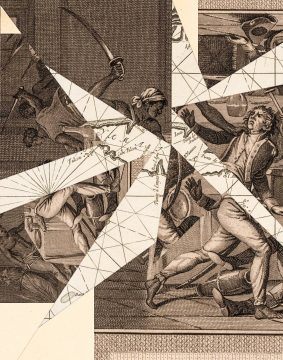Casey Cep at The New Yorker:
 Understood as a military struggle, slavery was a conflict staggering in its scale, even just in the Caribbean. Beginning in the seventeenth century, European traders prowled Africa’s Gold Coast looking to exchange guns, textiles, or even a bottle of brandy for able bodies; by the middle of the eighteenth century, slaves constituted ninety per cent of Europe’s trade with Africa. Of the more than ten million Africans who survived the journey across the Atlantic, six hundred thousand went to work in Jamaica, an island roughly the size of Connecticut. By contrast, four hundred thousand were sent to all of North America. (The domestic slave trade was another matter: by the time the Civil War began, there were roughly four million enslaved people living in the United States.)
Understood as a military struggle, slavery was a conflict staggering in its scale, even just in the Caribbean. Beginning in the seventeenth century, European traders prowled Africa’s Gold Coast looking to exchange guns, textiles, or even a bottle of brandy for able bodies; by the middle of the eighteenth century, slaves constituted ninety per cent of Europe’s trade with Africa. Of the more than ten million Africans who survived the journey across the Atlantic, six hundred thousand went to work in Jamaica, an island roughly the size of Connecticut. By contrast, four hundred thousand were sent to all of North America. (The domestic slave trade was another matter: by the time the Civil War began, there were roughly four million enslaved people living in the United States.)
Jamaica had hundreds of plantations, which grew cocoa, coffee, ginger, indigo, and, above all, sugar. Half the enslaved population labored on sugar plantations, where even a modest operation had a hundred and fifty slaves who worked year-round, planting, harvesting, and refining the crop, which was sold around the world. Brown’s previous book, “The Reaper’s Garden: Death and Power in the World of Atlantic Slavery,” described the miserable conditions that prevailed in Jamaica after the British seized control from the Spanish, in 1655.
more here.
